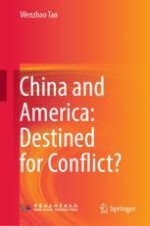2022 | OriginalPaper | Chapter
6. Managing Differences Constructively
Author : Wenzhao Tao
Published in: China and America: Destined for Conflict?
Publisher: Springer Nature Singapore
Activate our intelligent search to find suitable subject content or patents.
Select sections of text to find matching patents with Artificial Intelligence. powered by
Select sections of text to find additional relevant content using AI-assisted search. powered by
